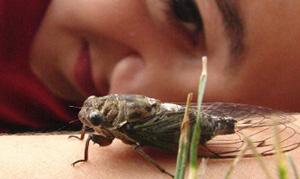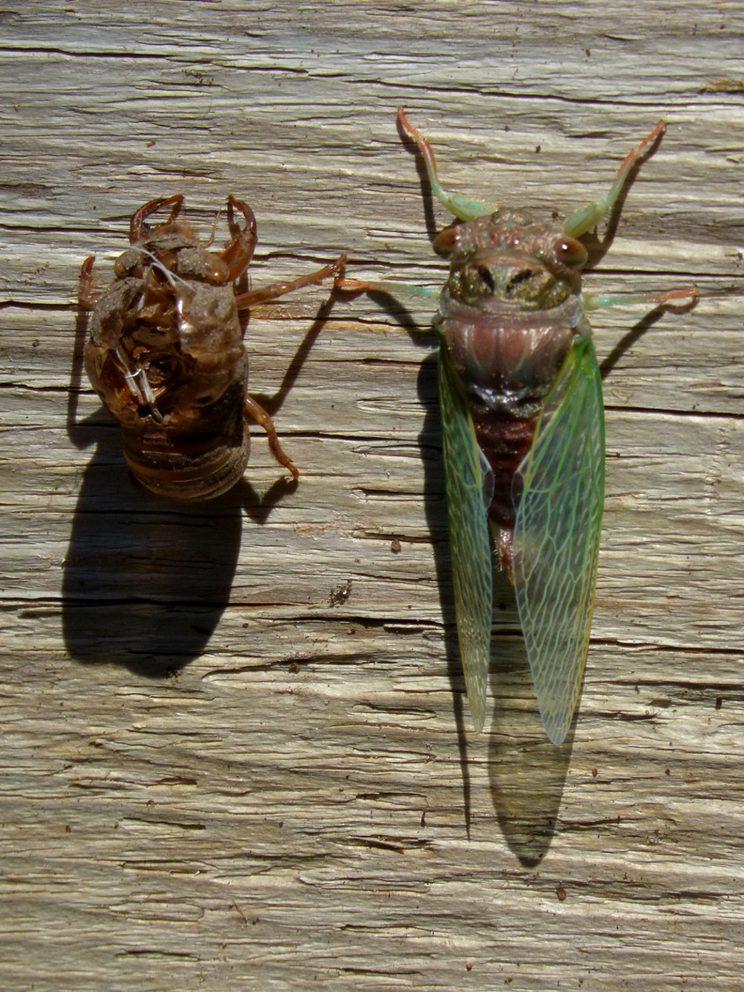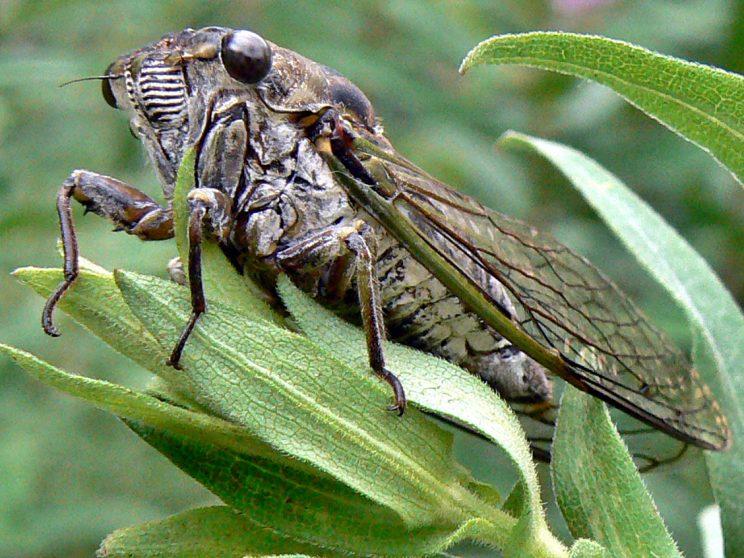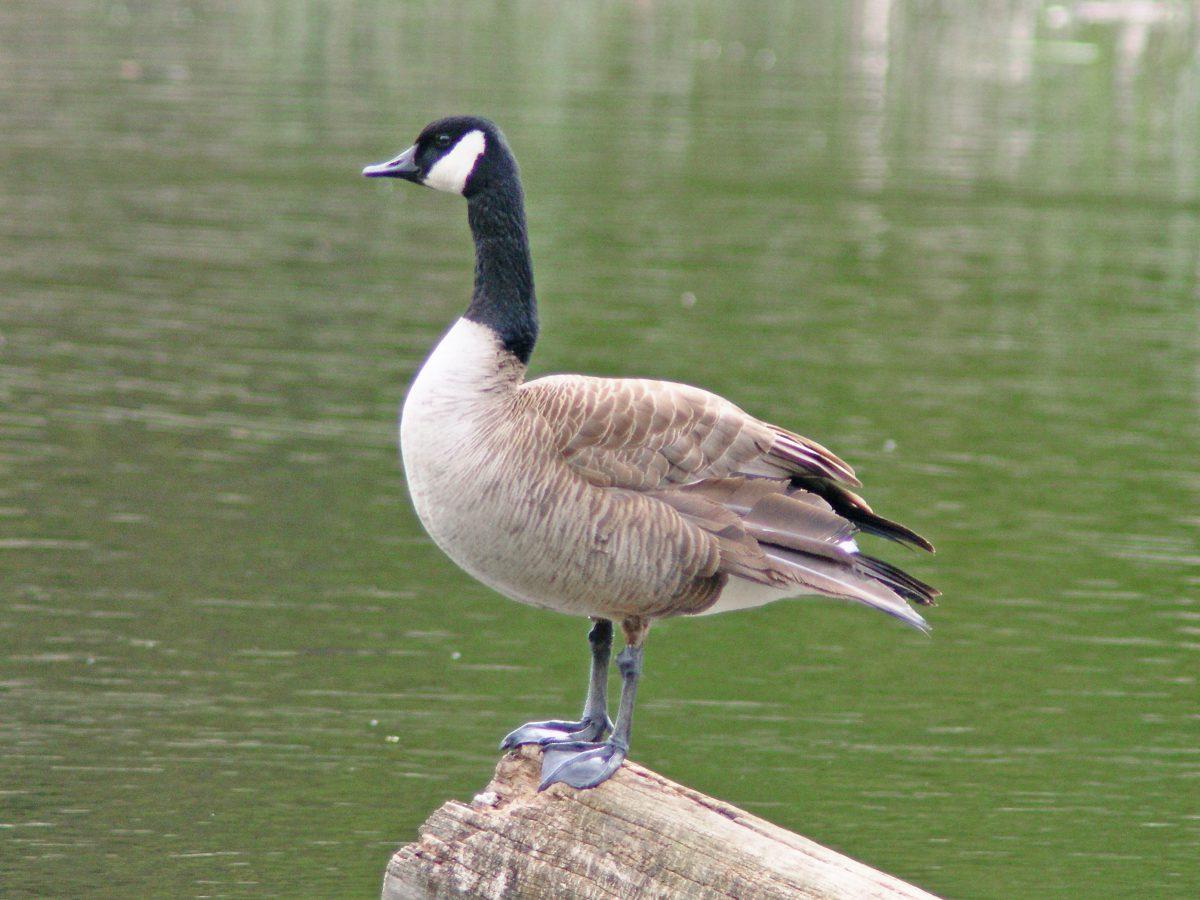Written by Danielle Fallone, a volunteer at the High Park Nature Centre. This article first appeared on the High Park Nature Centre blog.
In the thick of the Toronto summer heat, you might find yourself wondering: What’s that strange sound? It’s not the power lines, nor is it crickets. The long, lazy, buzzing drone that we hear in Ontario in mid-to-late summer is the sound of cicadas. It’s the Dog-day Cicada (Tibicen canicularis) that you’ll hear in High Park, pictured here with young naturalist James. You may even be lucky enough to find one of the species’ exoskeletons still attached to a tree as so many Nature Centre campers do! This fascinating and unique insect is truly one of nature’s wonders to behold.
Only vertebrates are capable of vocal sounds, but some invertebrates – like cicadas – possess special organs that are capable of producing audible mechanical sounds. Some vertebrates make non-vocal sounds too (such as the Eastern Massasauga Rattlesnake, found around Georgian Bay and the Bruce Peninsula).
Cicadas generate the loudest sound of all insects! They are also quite large amongst insects, with adults of the North American species ranging from 2-5 cm in length. Only male cicadas have the timbal organs necessary to emit their loud, trademark sound. These organs are made up of two elastic, circular membranes (timbals) affected by the contraction and relaxation of the large timbal muscle. The rapid repetition of this action produces a seemingly continuous sound. Amazingly, the frequency of these sound-producing contractions in cicadas ranges from 120-480 per second! The sound they emit is further affected by contractions of their abdominals, which in turn contract and expand air chambers (sacs) in the cicada’s largely hollow abdomen.
Each cicada species has a characteristic “song”, primarily used as a mating call. However they are also prompted by the sound of other males’ calls, with which they will sing along; they also emit a call of distress when disturbed or otherwise threatened.
There are approximately 1500 known species of cicada, generally found in deserts, grasslands, and forests. Dog-day Cicadas are most commonly found in North American temperate forests and meadows, and are referred to as “annual” cicadas due to their appearance every summer around this time. This designation also serves to distinguish them from periodic cicadas, such as the rather unusual isolated 13- and 17-year species (which spend even longer periods in underground incubation, as their names suggest).
The first stage of the cicada’s life cycle begins when the adult female cuts into a woody plant, creating a crevice in which to implant her eggs. Once hatched, the infant cicadas (termed nymphs) drop to the ground and burrow, using their strong front legs to dig. The nymphs develop underground for several years, feeding on root juices. Cicadas feed exclusively on plants, using their piercing mouthparts to drink the plant sap of oak, willow, ash, and maple trees, among others. When it is finally time for them to ascend to the surface, they find a nearby plant on which to shed their skins (molting) and emerge as fully formed adults. Check out this amazing video of a cicada molting, a sight Nature Centre campers often see during the summer months!
Dog-day Cicadas are camouflaged in hues of green, brown, and black to protect them from predators, such as birds. But if you keep your eyes peeled, you might just spot one next time you visit High Park!
Sources
- “cicada.” Encyclopædia Britannica. Encyclopædia Britannica Online Academic Edition. Encyclopædia Britannica Inc., 2012. Web. 20 Jul. 2012.
- “cicada.” World Encyclopedia. Philip’s, 2008. Oxford Reference Online. Oxford University Press. Athabasca University. 20 July 2012 .
- “sound production.” Encyclopædia Britannica. Encyclopædia Britannica Online Academic Edition. Encyclopædia Britannica Inc., 2012. Web. 21 July 2012.
- Yang, Louie H. ”Cicada.” AccessScience. McGraw-Hill Companies, 2006. Web. 21 July 2012.






















